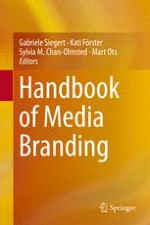2015 | OriginalPaper | Buchkapitel
Media Branding and Media Marketing: Conflicts with Journalistic Norms, Risks of Trial and Error
verfasst von : Stephan Russ-Mohl, Rukhshona Nazhdiminova
Erschienen in: Handbook of Media Branding
Aktivieren Sie unsere intelligente Suche, um passende Fachinhalte oder Patente zu finden.
Wählen Sie Textabschnitte aus um mit Künstlicher Intelligenz passenden Patente zu finden. powered by
Markieren Sie Textabschnitte, um KI-gestützt weitere passende Inhalte zu finden. powered by
